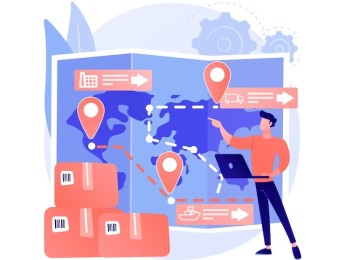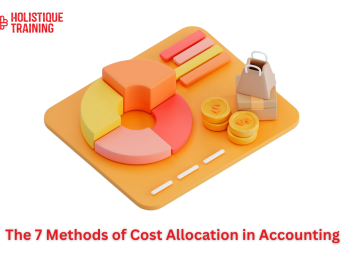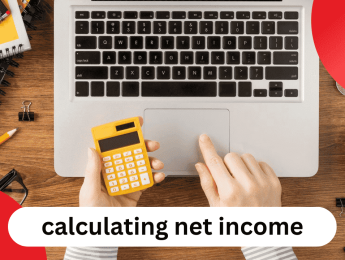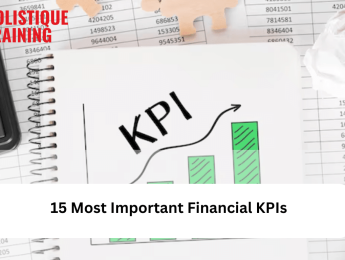- Table of Contents
- Introduction
- What Is Decision-Making in the Workplace?
- Steps of the Decision-Making Process
- 1. Identification of the Problem or Opportunity
- 2. Gathering Information
- 3. Generating Alternatives
- 4. Evaluating Alternatives
- 5. Making a Choice
- 6. Implementing the Decision
- 7. Monitoring and Feedback
- 8. Evaluating Outcomes
- Decision-Making Techniques
- 1. Rational Decision-making
- 2. Intuitive Decision-making
- 3. Group Decision-making
- 4. Cost-Benefit Analysis
- 5. Scenario Planning
- 6. SWOT Analysis
- Do Men and Women Think and Act Differently?
- How Men and Women Decide
- What Variations Could Play a Role in Decision-Making Among Genders?
- 1. Socialisation and Stereotypes
- 2. Educational and Professional Experiences
- 3. Cultural Expectations
- 4. Leadership Opportunities
- 5. Media and Popular Culture
- 6. Workplace Dynamics
- The Final Verdict – Who Is the Better Decision-Maker?
- Strengths of Male Decision Makers:
- Strengths of Female Decision Makers:
- The Power of Diversity in Decision-Making
- Adaptability as the True Measure
- How to Achieve Gender Balance in Decision-Making
- 1. Gender-Neutral Leadership Development
- 2. Diverse Decision-making Teams
- 3. Eliminate Bias and Discrimination
- 4. Foster Inclusive Leadership
- 5. Encourage Intersectionality
- 6. Data-Driven Decision-making
- 7. Promote Work-Life Balance
- 8. Educational and Awareness Programmes
- Conclusion
Introduction
In the vast expanse of human cognition, decision-making serves as a cornerstone. Every day, individuals make myriad decisions, varying from mundane choices like selecting a breakfast menu to more significant ones like financial investments or career moves. However, have you ever paused to ponder whether your gender influences these decisions? The intersection of gender and decision-making is a topic of considerable intrigue and debate in both academic and popular discourse. This article aims to shed light on this subject, exploring the different nuances of decision-making between men and women.
What Is Decision-Making in the Workplace?
Decision-making in the workplace involves the process of selecting the best course of action from a set of alternatives to achieve specific goals. These decisions can be as mundane as choosing the next office coffee machine or as profound as determining a company's strategic direction for the next decade. In essence, it's the art and science of navigating through options and making choices that can significantly impact an organisation.
Steps of the Decision-Making Process
Decision-making is a nuanced process that involves a series of intricately woven steps. As organisations grapple with challenges and opportunities, understanding these steps becomes paramount in ensuring that the choices made align with the organisation's goals and values. Let's take a closer look at each step to appreciate the complexity and depth of the decision-making process:
1. Identification of the Problem or Opportunity
Every decision-making journey begins with the identification of a problem or the recognition of a promising opportunity. This crucial step involves astute observation and analysis. It requires stakeholders to dig deep, pinpointing issues or possibilities that demand attention. Often, this phase necessitates asking probing questions, conducting thorough research, and engaging in insightful conversations to grasp the nature of the challenge at hand fully.
2. Gathering Information
Once the problem or opportunity is identified, decision-makers embark on a quest for knowledge. Gathering relevant information lays the foundation for informed decision-making. In the information age, this step involves delving into vast data sets, conducting surveys, consulting subject matter experts, and researching best practices. The quality and depth of information collected directly influence the subsequent stages of the decision-making process, shaping the available alternatives and their potential outcomes.
3. Generating Alternatives
Armed with a wealth of information, decision-makers enter the realm of creativity. This phase encourages brainstorming and idea generation. It's about thinking outside the box and exploring diverse perspectives. Often in teams, decision-makers generate a spectrum of alternatives, considering various approaches to address the identified problem or leverage the identified opportunity. Encouraging a free flow of ideas is essential at this stage, as it sets the stage for a rich tapestry of potential choices.
4. Evaluating Alternatives
The decision-making process takes a pivotal turn during the evaluation of alternatives. This step involves a meticulous analysis of the generated options. Decision-makers assess each alternative, weighing the pros and cons and considering factors such as feasibility, cost, time implications, potential risks, and expected outcomes. Techniques like cost-benefit analysis and risk assessment are employed to quantitatively evaluate the alternatives, providing a structured framework for decision-makers to compare and identify the most promising options.
5. Making a Choice
Amidst the plethora of options, decision-makers must exercise their judgment and make a choice. This phase requires a delicate balance between analysis and intuition. It involves aligning the selected alternative with the organisation's mission, vision, and overarching objectives. Making a choice is a definitive moment, demanding decisiveness and confidence. It often involves considering the long-term implications of the decision, ensuring that it aligns with the organisation's strategic direction and contributes positively to its growth and sustainability.
6. Implementing the Decision
With the decision made, the focus shifts to implementation. This step transforms theoretical choices into tangible actions. Implementation involves detailed planning, resource allocation, and execution. It requires clear communication and coordination among team members, ensuring everyone understands their roles and responsibilities. Effective leadership and project management skills are instrumental during this phase, as they drive the practical realisation of the chosen alternative.
7. Monitoring and Feedback
Decision-making doesn't end with implementation; it transitions into a cycle of monitoring and feedback. Decision-makers must track the progress of the chosen alternative, gathering data and feedback on its outcomes. Continuous monitoring allows organisations to assess the decision's effectiveness, identify potential challenges, and adapt strategies as needed. This iterative process of feedback and adjustment is fundamental to organisational learning, fostering resilience and adaptability in the face of evolving circumstances.
8. Evaluating Outcomes
The final step of the decision-making process involves reflecting on the outcomes. Decision-makers assess the consequences of their choices, analysing the impact on the organisation, its stakeholders, and the broader community. This reflective evaluation provides valuable insights for future decision-making endeavours. Celebrating successes, acknowledging challenges, and learning from failures contribute to organisational growth and pave the way for more informed and effective decisions in the future.
In essence, the steps in the decision-making process form a comprehensive framework that guides organisations through the complexities of choice. Each step, from problem identification to outcome evaluation, is intertwined with the others, creating a holistic approach to strategic and adaptive decision-making. As organisations embrace the intricacies of this process, they empower themselves to make decisions that are impactful in the present and visionary in shaping a sustainable and prosperous future.
Decision-Making Techniques
Individuals and organisations employ various decision-making techniques. Some of the most commonly used ones include:
1. Rational Decision-making
Rational decision-making is a systematic, step-by-step process that involves a thorough analysis of the problem, generation of alternatives, and objective evaluation. This technique relies on logic, data, and a clear understanding of cause-and-effect relationships. It requires decision-makers to identify criteria, assign weights to these criteria based on their importance, and assess each alternative against these criteria. By emphasising objectivity and quantitative analysis, rational decision-making minimises the influence of emotions and biases, leading to well-considered choices.
2. Intuitive Decision-making
Intuition, often considered a mysterious and instinctive process, plays a significant role in decision-making. Intuitive decision-makers rely on their past experiences, tacit knowledge, and subconscious cues to make judgments swiftly. This technique is precious when time is limited and decisions must be made promptly. Intuition can be honed through experience and expertise, enabling individuals to recognise patterns and make accurate judgments based on subtle signals. While intuitive decisions may seem subjective, they are often grounded in a wealth of implicit knowledge.
3. Group Decision-making
Group decision-making harnesses the collective intelligence of diverse individuals. This technique fosters creativity and critical thinking by bringing together people with different backgrounds, expertise, and perspectives. Group discussions stimulate idea generation and challenge assumptions, leading to more comprehensive evaluations of alternatives. However, effective group decision-making requires skilled facilitation to manage conflicts, encourage active participation, and ensure that dominant voices do not overshadow valuable contributions. When managed adeptly, group decision-making can lead to well-rounded choices that draw on the strengths of each team member.
4. Cost-Benefit Analysis
Cost-benefit analysis is a quantitative technique used to assess the financial implications of decisions. It involves comparing the costs associated with each alternative to the expected benefits. By assigning monetary values to costs and benefits, decision-makers can calculate the net value of each option. This technique is particularly valuable in scenarios where financial considerations are paramount. Cost-benefit analysis provides a clear framework for evaluating the economic viability of alternatives, enabling organisations to prioritise choices that offer the highest return on investment.
5. Scenario Planning
In an ever-changing world, decision-makers must anticipate future uncertainties. Scenario planning is a technique that involves creating multiple hypothetical scenarios based on different future developments. Decision-makers explore how each alternative would fare under these diverse conditions, allowing them to prepare for various potential outcomes. By considering various scenarios, organisations can develop robust and adaptable strategies, ensuring resilience in the face of unpredictable events. Scenario planning encourages strategic foresight and enables proactive decision-making in complex and volatile environments.
6. SWOT Analysis
SWOT analysis is a technique that evaluates an organisation’s internal strengths and weaknesses, along with external opportunities and threats. Decision-makers identify internal factors that give the organisation a competitive advantage (strengths) and areas that require improvement (weaknesses). Simultaneously, they analyse external factors, such as market trends and competitor activities, to identify potential opportunities and threats. SWOT analysis provides a comprehensive overview of the organisation's position in its environment, guiding strategic decisions and risk mitigation efforts. By understanding these fundamental aspects, decision-makers can make choices that leverage strengths, address weaknesses, capitalise on opportunities, and mitigate threats.
By understanding and mastering these techniques, individuals and organisations empower themselves to make well-informed, strategic and adaptable decisions in the face of uncertainty. Whether relying on rational analysis, intuitive judgement, collaborative efforts, quantitative evaluation, strategic foresight, or comprehensive analysis of internal and external factors, decision-makers can craft choices that stand the test of time, steering organisations toward success and sustainability.
Do Men and Women Think and Act Differently?
Now, let's tackle a crucial question: do men and women think and act differently in the context of decision-making? Numerous studies and real-world experiences suggest that there are indeed some disparities in the way men and women approach decision-making.
How Men and Women Decide
Regarding how men and women decide, research suggests notable differences in their approaches, which can be attributed to a complex interplay of biological, psychological, and sociocultural factors. Let’s delve deeper into the nuanced ways in which men and women navigate the decision-making landscape:
Communication Styles
One striking difference in decision-making styles between men and women is their communication approaches. Women often lean towards collaborative and inclusive language, emphasising teamwork and seeking consensus. They value input from various stakeholders, fostering an environment where multiple perspectives are acknowledged and integrated into the decision-making process. In contrast, men are often perceived as adopting a more directive and authoritative approach. They may prioritise a clear, decisive course of action, sometimes emphasising hierarchy and individual authority in decision-making scenarios. These communication styles are not inherently gender-specific but are shaped by social expectations and upbringing, reflecting broader societal norms regarding assertiveness and collaboration.
Risk Tolerance
Research indicates that men generally exhibit higher risk tolerance in decision-making situations. This tendency can lead to more daring and audacious choices, with the potential for both substantial gains and significant losses. Men may be more inclined to take calculated risks, embracing opportunities with higher potential rewards. On the contrary, women are often perceived as more risk-averse, opting for safer and more conservative decisions. This cautious approach can stem from a desire for stability and security, leading to decisions that are considered and prudent. However, it’s crucial to note that these tendencies are broad generalisations and individual differences within each gender group are immense.
Empathy and Emotional Intelligence
Empathy and emotional intelligence play a pivotal role in decision-making, influencing how individuals assess the impact of their choices on others. Studies consistently show that women score higher in empathy and emotional intelligence assessments. This heightened emotional awareness enables women to consider the feelings and perspectives of others, often leading to decisions that prioritise interpersonal relationships and emotional well-being. In contrast, while men are also capable of empathy and emotional intelligence, their decisions might be perceived as more logic-driven, focusing on objective data and analytical reasoning.
Decision-Making Context
The context in which decisions are made can significantly influence men's and women's approaches. For instance, in situations that demand adaptability and quick thinking, women may excel due to their collaborative nature and ability to integrate diverse ideas rapidly. On the other hand, men might thrive in contexts that require assertive leadership and rapid, decisive action.
Confidence and Decision-Making
Confidence, or the perception of confidence, also affects decision-making dynamics. Research indicates that men often exhibit higher levels of self-confidence, even in situations where their competence levels are comparable to those of women. This confidence can influence decision-making by making men more assertive in their choices. While equally competent, women may sometimes hesitate or second-guess their decisions due to societal conditioning or imposter syndrome, which can impact the decision-making process.
In short, the differences in how men and women decide are not rigid rules but general tendencies influenced by a complex interplay of societal expectations, biological factors, and individual experiences. Recognising and embracing this diversity is essential for fostering inclusive decision-making environments. Organisations can create a balanced decision-making landscape by appreciating the strengths that both genders bring to the table. The key lies in valuing collaboration, encouraging diverse perspectives, and nurturing a workplace culture that appreciates the richness of varied approaches. In doing so, organisations can harness the collective wisdom of their diverse workforce, making well-informed decisions that reflect the multifaceted nature of the human experience.
What Variations Could Play a Role in Decision-Making Among Genders?
While these gender-based differences are not universal and can be attributed to a complex interplay of social, cultural, and individual factors, several variations could influence decision-making among genders:
1. Socialisation and Stereotypes
From childhood, individuals are exposed to societal norms and gender stereotypes that significantly impact their decision-making styles. Boys are often encouraged to be assertive, independent, and risk-taking, traits that can translate into more confident and daring decision-making in adulthood. Conversely, girls are often taught to be nurturing, cooperative, and cautious, shaping their decisions in ways that prioritise harmony and stability. These early socialisation processes create the foundation upon which adult decision-making patterns are built.
2. Educational and Professional Experiences
Educational and professional experiences play a pivotal role in decision-making variations among genders. Historically, certain fields and professions have been dominated by one gender, leading to the development of specific decision-making styles within those contexts. For example, women in leadership roles might develop decision-making strategies that emphasise collaboration and consensus-building due to the challenges they face in male-dominated environments. In contrast, men in traditionally female-dominated fields might adapt their decision-making styles to foster cooperation and teamwork.
3. Cultural Expectations
Cultural expectations vary widely across different societies and can profoundly influence how men and women approach decision-making. In cultures where collectivism is valued, decisions are often made with the community's best interests in mind, leading to more collaborative and group-oriented decision-making styles. In contrast, cultures that emphasise individualism may foster more assertive and independent decision-making approaches. These cultural norms shape the perception of gender-appropriate behaviour, influencing how men and women express their decision-making preferences.
4. Leadership Opportunities
The availability of leadership opportunities significantly impacts how men and women approach decision-making. Historically, men have held most leadership positions, allowing them to develop and refine decision-making skills in various high-stakes situations. In contrast, women breaking into leadership roles might adapt their decision-making styles to overcome biases and societal expectations. Consequently, men might exhibit a more assertive and authoritative approach, while women, especially in male-dominated environments, might emphasise collaboration and empathy in their decisions.
5. Media and Popular Culture
Media and popular culture play a significant role in reinforcing gender stereotypes and shaping societal perceptions of how men and women should behave. Portrayals of strong, assertive male characters and nurturing, empathetic female characters in movies, television shows, and literature can reinforce these stereotypes, impacting how individuals perceive gender roles in decision-making. Overcoming these media-driven biases is crucial in fostering gender equality in decision-making processes.
6. Workplace Dynamics
The culture within the workplace also plays a pivotal role in decision-making variations. Inclusive and diverse workplaces that value different perspectives tend to encourage a broader range of decision-making styles, irrespective of gender. In contrast, traditional or hierarchical workplaces might reinforce gender-specific decision-making expectations, limiting the range of approaches that men and women feel comfortable employing. Inclusive workplaces celebrating diversity can break down these barriers, fostering an environment where individuals are empowered to make decisions based on their unique strengths and skills, regardless of gender.
Understanding the variations in decision-making among genders necessitates a nuanced appreciation of the multifaceted factors at play. Gender-specific decision-making patterns are not predetermined or fixed; rather, they are dynamic and adaptable, shaped by the interplay of societal expectations, cultural norms, and individual experiences. Embracing the complexity of decision-making among genders requires a commitment to breaking down stereotypes, fostering inclusive environments, and appreciating the diversity of thought and approach that each gender brings to the table. By acknowledging and valuing these variations, organisations can create truly inclusive decision-making processes, harnessing the collective strength of diverse perspectives and ultimately driving innovation and success.
The Final Verdict – Who Is the Better Decision-Maker?
The question of who makes better decisions, men or women, is neither straightforward nor productive. It's important to recognise that there is no one-size-fits-all answer. A decision maker's effectiveness depends on the context, the specific situation, and the qualities they bring to the table.
Strengths of Male Decision Makers:
Decisiveness and Confidence: Men often exhibit confidence and assertiveness in decision-making situations. Their ability to make quick, bold decisions can be advantageous in scenarios requiring rapid responses and strong leadership.
Risk-Taking Propensity: As mentioned above, studies suggest that men tend to have a higher risk tolerance. This willingness to take risks can lead to innovative and daring decisions, which, if well-calculated, can result in significant organisational advancements.
Analytical Thinking: Men often excel in analytical and logical thinking, carefully weighing pros and cons and making decisions based on objective data and facts.
Strengths of Female Decision Makers:
Collaboration and Inclusivity: Women are known for their collaborative approach to decision-making. They seek input from various stakeholders and foster a consensus-driven environment, leading to well-rounded, inclusive decisions.
Empathy and Emotional Intelligence: Women often score higher in empathy and emotional intelligence, enabling them to consider the emotional impact of decisions on individuals and communities. This empathetic understanding can lead to decisions that prioritise people's well-being.
Holistic Thinking: Women often have a holistic perspective, considering the broader context of decisions. They are adept at understanding the interconnectedness of various factors, allowing for decisions that align with the organisation's overall mission and values.
The Power of Diversity in Decision-Making
The most effective and innovative decisions often arise from diverse perspectives. Combining the strengths of male and female decision-makers can lead to well-informed choices that consider a wide range of factors. In mixed-gender teams, collaboration between individuals with different decision-making styles often results in comprehensive, balanced decisions that consider various angles of a situation.
Adaptability as the True Measure
In today's rapidly changing world, adaptability is crucial for effective decision-makers. Flexible switching between different decision-making styles based on the specific context is invaluable. A skilled decision-maker understands when to be assertive and decisive and when to be collaborative and empathetic. Adaptability allows individuals to tailor their approach according to the situation, ensuring that decisions are well-informed and contextually relevant.
Ultimately, the effectiveness of decision-making is not determined by gender but by the ability to harness the collective wisdom of diverse minds. Embracing these differences and leveraging them as assets can lead to decisions that are not only strategic and well-informed but also inclusive and reflective of the multifaceted nature of the human experience. In this collaborative spirit, organisations can truly harness the power of gender diversity, paving the way for a future where decisions are made not by men or women but by capable individuals, working harmoniously to shape a better tomorrow.
Trends | Description | Impact on Decision-Making |
Technology Integration | Embracing AI, data analytics for insights. | Enhances data-driven and predictive choices. |
Remote Collaboration | Virtual teams, digital platforms for communication. | Encourages diverse global perspectives. |
Emotional Intelligence | Focus on empathy, understanding in decision-making. | Humanises choices, considers emotions. |
Sustainable Decision-Making | Environmental, social impact assessments. | Drives eco-conscious and ethical decisions. |
Decentralised Leadership | Distributed decision authority and responsibility. | Fosters agility, empowers local expertise. |
Table 2: The future of decision-making in the workplace
How to Achieve Gender Balance in Decision-Making
Achieving gender balance in decision-making is not just a matter of diversity for the sake of representation; it’s a strategic imperative that can significantly enhance the quality and effectiveness of decisions within organisations. Here are actionable strategies to foster inclusivity and equality in decision-making processes:
1. Gender-Neutral Leadership Development
Promote leadership development programmes that are gender-neutral and open to individuals of all genders. Provide mentorship, coaching, and training opportunities that empower both men and women to hone their leadership skills. By creating equal pathways to leadership roles, organisations can ensure a more balanced representation at decision-making tables.
2. Diverse Decision-making Teams
Form diverse decision-making teams based on gender, background, and expertise. Diverse teams bring many perspectives and experiences, leading to richer discussions and more innovative solutions. Actively seek out diverse voices and ensure everyone's opinions are valued and heard. Embrace the idea that diverse teams are stronger teams.
3. Eliminate Bias and Discrimination
Implement policies and practices that eliminate gender bias and discrimination within the organisation. Conduct regular training sessions to raise awareness about unconscious bias and its impact on decision-making. Ensure that hiring, promotion, and evaluation processes are fair and free from gender-based discrimination. Encourage a culture where merit and competence are the sole criteria for decision-making opportunities.
4. Foster Inclusive Leadership
Promote and celebrate inclusive leadership behaviours. Inclusive leaders actively seek out diverse perspectives, listen empathetically, and value the contributions of all team members. Leaders who champion inclusivity set a positive example for the entire organisation, encouraging others to embrace diverse viewpoints in their decision-making processes.
5. Encourage Intersectionality
Recognise and respect the intersectionality of gender with other aspects of identity, such as race, ethnicity, sexual orientation, and socioeconomic background. Intersectionality acknowledges that individuals face unique challenges and advantages based on the intersection of these factors. Embracing intersectionality ensures that decision-making processes are sensitive to all individuals' diverse experiences and needs, promoting true equality.
6. Data-Driven Decision-making
Utilise data to track and analyse gender representation at various levels of the organisation. Regularly assess gender diversity in leadership positions, decision-making teams, and across departments. Use data-driven insights to identify disparities and set specific goals for achieving gender balance. Transparently communicate progress and celebrate achievements, fostering a culture of accountability and continuous improvement.
7. Promote Work-Life Balance
Create policies and initiatives that support work-life balance for all employees, regardless of gender. Flexible work hours, parental leave policies, and supportive childcare facilities can help employees balance their professional and personal responsibilities. By alleviating the burden of caregiving responsibilities, organisations can ensure that both men and women have equal opportunities to participate in decision-making processes.
8. Educational and Awareness Programmes
Conduct educational programmes and awareness campaigns within the organisation to promote gender equality and diversity. These initiatives can include workshops, seminars, and discussions focused on challenging stereotypes, promoting empathy, and fostering a culture of respect. Increased awareness creates a more inclusive environment where gender differences are celebrated and valued.
In a workplace where men and women have equal opportunities to contribute their unique talents and perspectives, decisions become more robust, reflective of diverse experiences, and ultimately more successful. By fostering gender balance in decision-making, organisations strengthen their internal culture and position themselves as leaders in innovation and equality, setting the stage for a brighter and more inclusive future.
Conclusion
In the grand tapestry of decision-making, there is no definitive answer to the question of who makes better decisions between men and women. The real strength lies in recognising the unique qualities each gender brings to the decision-making process and fostering an environment where these strengths can flourish. Organisations can create a synergy that fuels innovation and resilience by appreciating men's and women's diverse perspectives, communication styles, and problem-solving approaches.
Ultimately, the effectiveness of decision-making is not determined by gender but by the ability to harness the collective wisdom of diverse minds. Embracing these differences and leveraging them as assets can lead to decisions that are not only strategic and well-informed but also inclusive and reflective of the multifaceted nature of the human experience. In this collaborative spirit, organisations can truly harness the power of gender diversity, paving the way for a brighter and more inclusive future.
Don't miss the opportunity to enhance your leadership skills for a more inclusive workplace. Explore our course, ‘Leadership Skills for Administrative Professionals,’ and embark on a transformative journey toward becoming a dynamic and inclusive leader who drives positive change in your organisation. Your leadership potential knows no bounds!
























